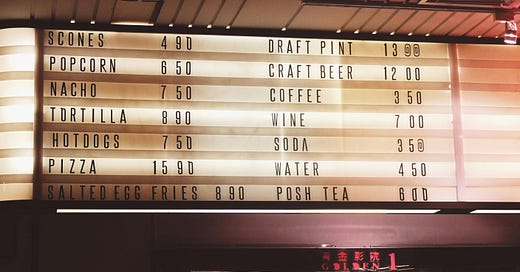Introduction
Determining what to charge clients is one of the biggest questions personal chefs face. Price too low and you may struggle to pay bills. Price too high, and you risk scaring away potential clients. Fortunately, striking the perfect balance is easier when you understand your costs, your niche, and the value you bring to the table.
Step 1: Know Your Costs
Start by calculating the basic building blocks of your services:
Ingredients: Factor in both the cost and quality level you promise (organic, local, premium cuts of meat, etc.).
Labor: Include planning, shopping, prep, cooking, and cleanup time—your time is money.
Overhead: Don’t forget about equipment, transportation, insurance, and any admin tools like Cutlet.
Pro Tip: Track all of these using Cutlet’s expense management functionality. Having an accurate view of your expenses helps you set profitable rates.
Step 2: Choose a Pricing Model
There are several approaches to pricing, and each has pros and cons.
Per Person Rate (e.g., $95 per person)
Pros: Straightforward, easy to explain to your customer.
Cons: Costs eat into your profit. You have to back into the cost to deliver whatever the client is asking for, so you need to get it right!
Flat Day Rate (e.g., $750 for personal chef services)
Pros: You always know what you are taking home per day of work.
Pros: You can pass expenses like groceries or transportation through to your customers.
Cons: Harder for customer to conceptualize. Makes your earnings more obvious to them.
Step 3: Consider Your Niche and Experience
Your expertise and specialization affect perceived value and justify higher rates. For example, if you have formal culinary training or a specialized niche (e.g., diabetic-friendly menus), you can position yourself as a premium service. Clients often pay more for rare expertise or dietary accommodations.
Step 4: Communicate Your Value
Pricing is not just about numbers—it’s also about how you present them.
Detail Your Services: Show a breakdown of what your client gets (menu planning, ingredient sourcing, personalized service, cleanup).
Focus on Benefits: Remind clients that your expertise saves them time, stress, and the cost of dining out.
Offer Packages: Bundling multiple services (like weekly meal prep + monthly event) can simplify the decision and increase your revenue.
Step 5: Review and Adjust Regularly
Market conditions, your skill level, and operating costs can change. Make it a habit to review your pricing every six months to a year.
Metrics: Look at profit margins, client satisfaction, repeat business.
Feedback: Ask loyal clients what they appreciate—and what they might pay more for.
Comparison: Keep an eye on local and online competitors to ensure you’re still in the right range.
How Cutlet Helps
Expense Tracking: Easily log ingredient costs, supplies, and other overhead.
Client Profiles: Maintain a record of each client’s pricing plan, dietary preferences, and order history.
Pricing Matrix: See how your margins change as you change your costs.
Invoice Creation: Automatically generate professional invoices that reflect your selected pricing model.
Conclusion
Pricing your personal chef services starts with understanding your true costs, then picking a structure that highlights your value and niche. By taking a data-driven approach—while still showcasing the extraordinary experiences you provide—you’ll find a sweet spot that keeps clients satisfied and your business profitable. And remember, a reliable management tool like Cutlet ensures you stay on top of all the numbers behind the scenes, so you can keep your focus on doing what you love most: creating incredible culinary experiences.



